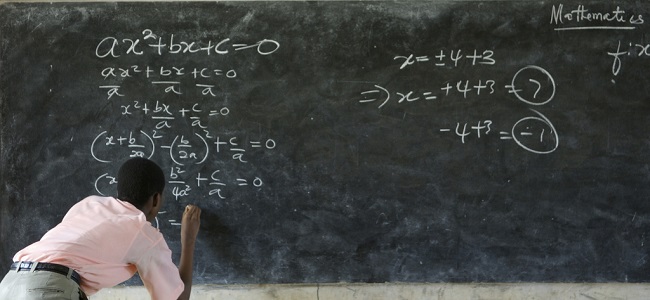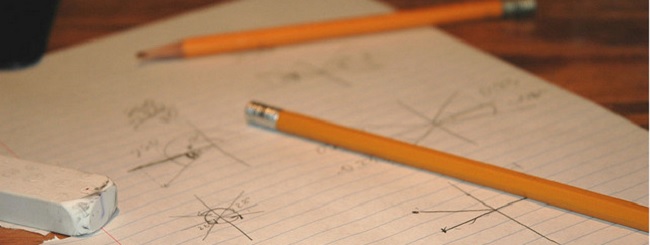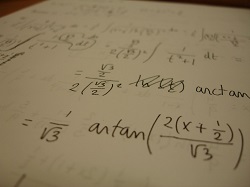The White Rose Maths Hub announced on 29th April that it has licensed three Teaching School Alliances to deliver its popular Bar Modelling twilight training. This new alliance will meet the growing appetite for the Hub’s training, which helps teachers to deliver Maths education more effectively.
Playground equipment providers Playforce have launched a selection of new products specifically designed to help KS1 and KS2 children to develop mathematical skills outdoors. The range of equipment, which also helps pupils to develop physical skills through climbing activities, was developed in collaboration with the Wiltshire-based company’s partner schools. Playforce offer free consultations to schools looking to find innovative ways to improve learning and play opportunities in their playgrounds.
Encouraging students to take an interest in Science, technology, Engineering and Maths (STEM) subjects can often be a challenge. This is especially true when teaching is based around workbooks and theory; when students are unable to find a link between what they are being taught, the learning environment they are in and their own interests, they are more likely to disengage. With the ever-increasing technological advancements, it’s not surprising that the next generation of students are likely to enter the working world, looking for jobs that don’t even exist now. Therefore, we must strive to inspire children from a young age, in order to unveil talent and boost engagement.
Edu-software experts busythings have been bringing multiplication to life in Primary schools throughout the UK with the latest addition to their cross-curricular online resource: Miner Birds Multiplication. With the recent emphasis on times tables, this original revision game is raising the bar in helping teachers to improve engagement and attainment levels in multiplication by delighting and inspiring children with fun gameplay, high-quality graphics, animation and sound effects.
1+2 Approach (Primary Language Learning)
In Primary 1, we have been actively involved in integrating the 1+2 approach into our everyday classroom environment. We have two class mascots called Etienne (French elephant) and Jorge (Spanish giraffe), who represent the two languages which are taught. These mascots have proven to be an excellent resource to the class. The children have to look after the mascots during the day; showing them care and respect and allowing them to be part of their learning experience. On a Friday, the children are given the opportunity to take the boys home. The adventures of Etienne and Jorge are recorded via Twitter or through our adventure journals, which are put inside the boy’s travel bags.
Tremendously fantastic editor James Cain wanted me to make sure that this article was "a different beast" from my previous Halloween article. My instincts would not allow me to title this article anything other than what it is. With Halloween 2015 fresh in our minds, my intention is to highlight some suitably authentic ways to incorporate the occasion into the classroom. These are things I have seen, some I have done, and some things I would like to do. I do not see any of these thoughts being limited to one grade level or group of grade levels since as a teacher flexibility is not only key but also a necessity. I also want to highlight why I feel that using Halloween in school and in the classroom is a good idea.
A lot of pupils are going to be enthused by STEM (science, technology, engineering and mathematics) subjects, and plenty of teachers like to run clubs around them. STEMNET’s Lisa Thompson gives her top tips on how to get a great STEM club running.

Many teachers would love to run an after school club with a handful of enthusiastic students where they get to explore all the fun things they just don’t have time for in the curriculum. The problem is many teachers just don’t know where to start. There is a dizzying array of enrichment opportunities with relatively low uptake from schools because many teachers are just too busy to engage with them, or never even hear about them in the first place! So here are my top tips for setting up a club and maintaining it throughout the year:
Given that this is a transformative time for British education, many teachers will be looking to gauge how the new curriculum will affect their work. Tim Handley, Year 5 maths and ICT lead at Norfolk’s Woodland Primary Academy, looks at the specifics of the upcoming curriculum, and discusses how maths teachers can best go about getting the most from it.

The Department for Education (DfE) is concerned that England is lagging behind other countries in maths, calling for us to be more ambitious in this area of our children’s education, following the example set by higher performing countries such as Singapore. It is certainly true that the Programme for International Student Assessment (PISA) league tables show the UK is behind global rivals. In international tests taken by 15 year olds, we are failing to make the top 20 in maths, reading and science. In a recent report on Mathematics, it was highlighted that British 15 year olds’ mathematics skills are now more than two whole academic years behind 15 year olds in Shanghai. England's Education Secretary Michael Gove said that since the 1990s, test performances had been "at best stagnant, at worst declining”.
Much of the UK’s teaching community is currently trying to wrap their heads around the new computing curriculum. Bristol Robotics Lab’s Zan Nadeem is keen to stress how important she finds maths as a part of computer science.

An article this week on how bad UK students are at maths compared to Chinese students, to be honest, wasn’t surprising. What makes it an even larger problem is that, with the push towards teaching computer science in schools, this lack of maths knowledge is going to cause problems.
Trying to get students to look at programming problems in a mathematical way and to solve them by using common maths facts is currently a huge challenge – yet this is a vital skill that needs to be taught, from an early age, if the next generation are going to be any good at writing programs.

Almost everyone who studied maths at school will at some point have bumped into BIDMAS or its twin, BODMAS.
BIDMAS stands for Brackets, Indices (powers), Division and Multiplication, Addition and Subtraction. BODMAS is identical, except “indices” are called “Order”. Both acronyms tell us the same thing: the order in which to tackle the operators in an equation.
For example, in the sum 1 + 22 - (3 + 2) x 4, we must first evaluate the contents of the brackets. Indices (powers) would be next, then division and multiplication, then finally addition and subtraction.
This order of precedence is crucial in all arithmetic. To do things in a different order (to start solving the above sum by doing 1 + 2, for example) would often lead to a different and incorrect answer.

A community-driven platform for showcasing the latest innovations and voices in schools
Pioneer House
North Road
Ellesmere Port
CH65 1AD
United Kingdom